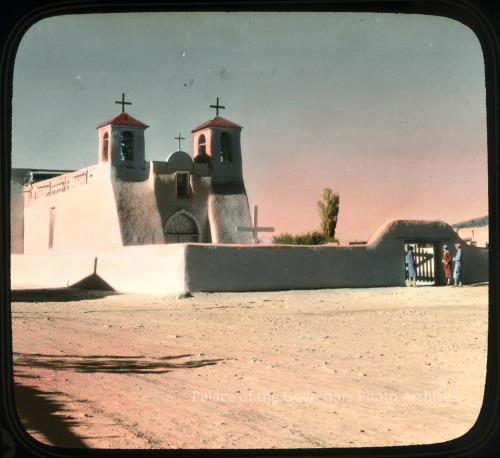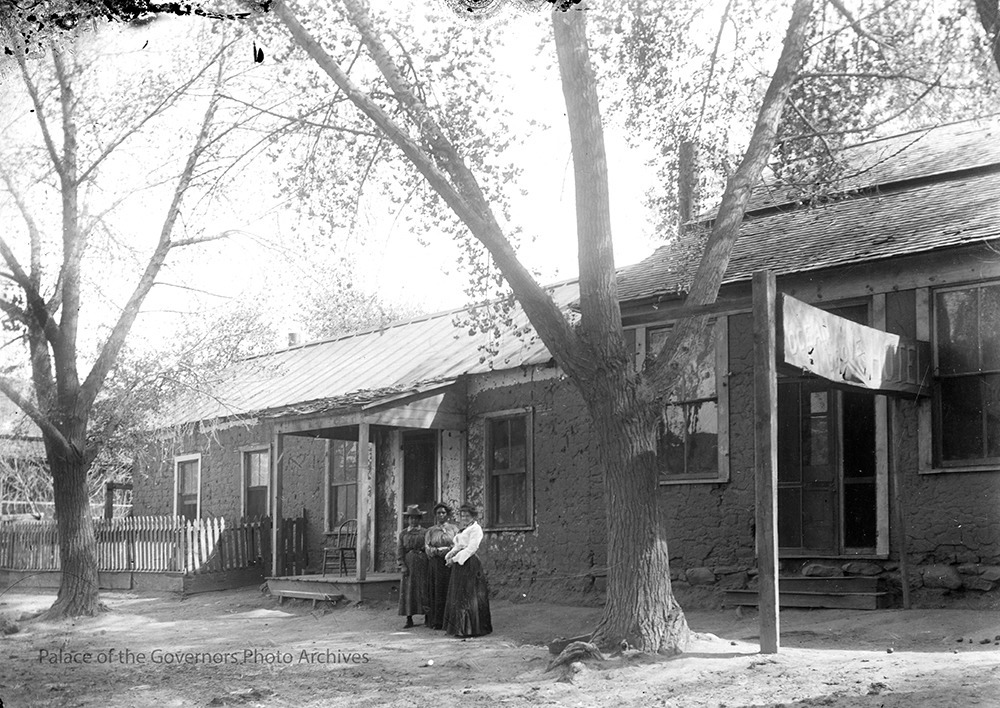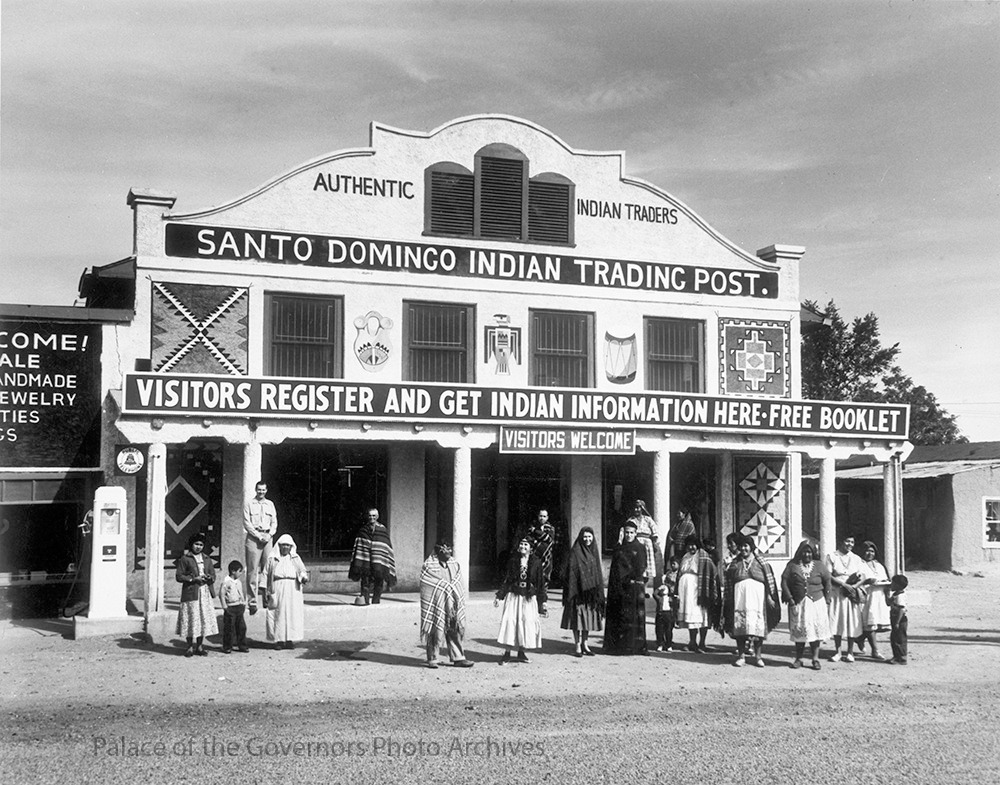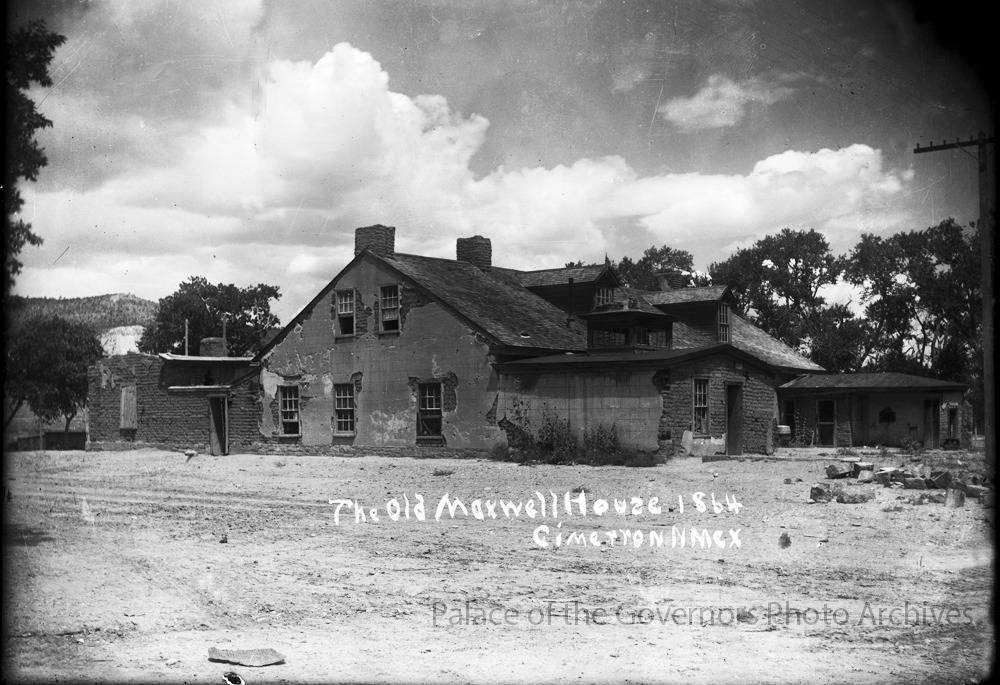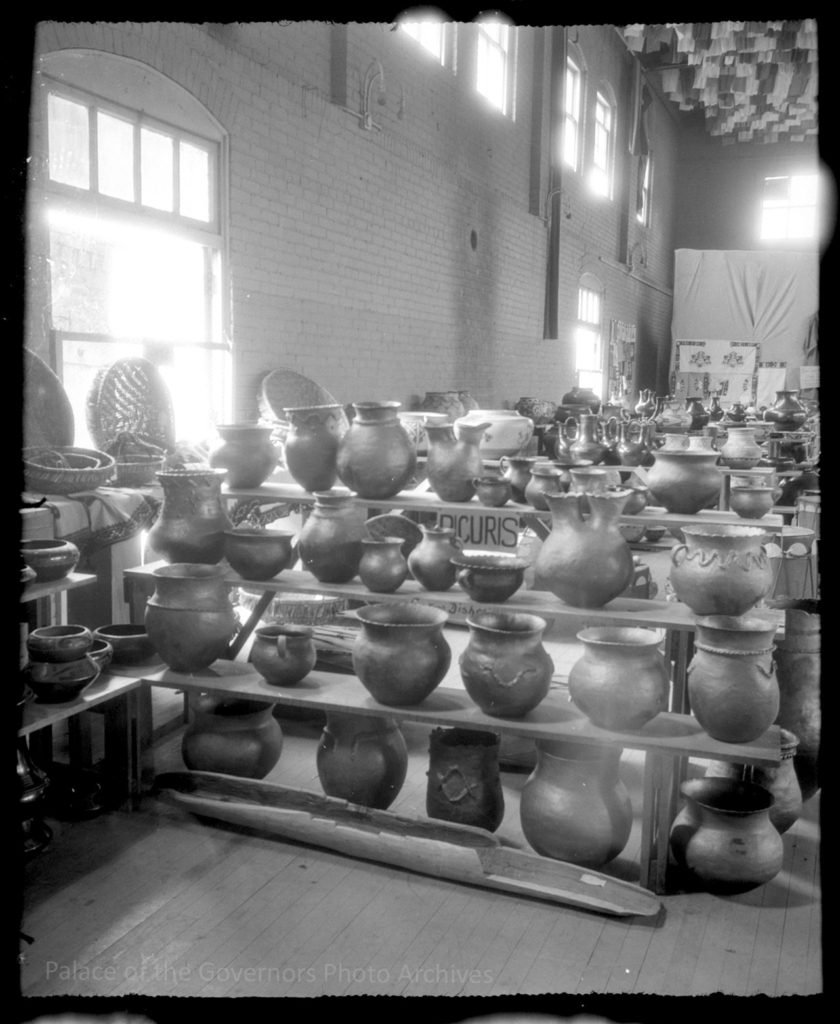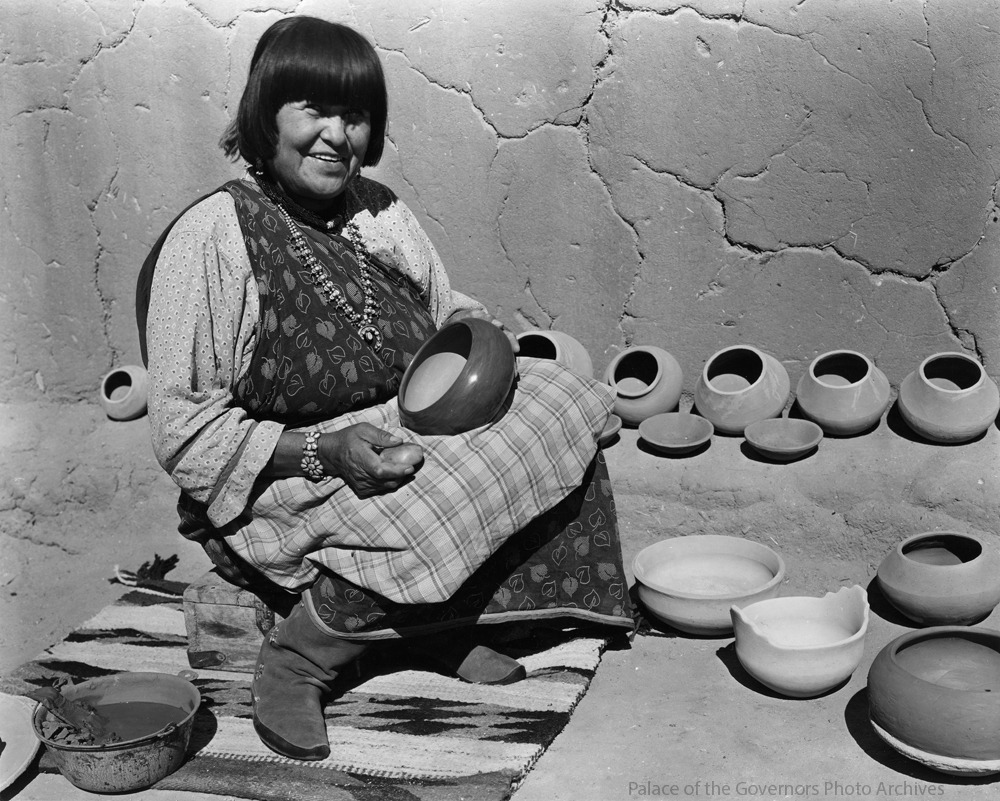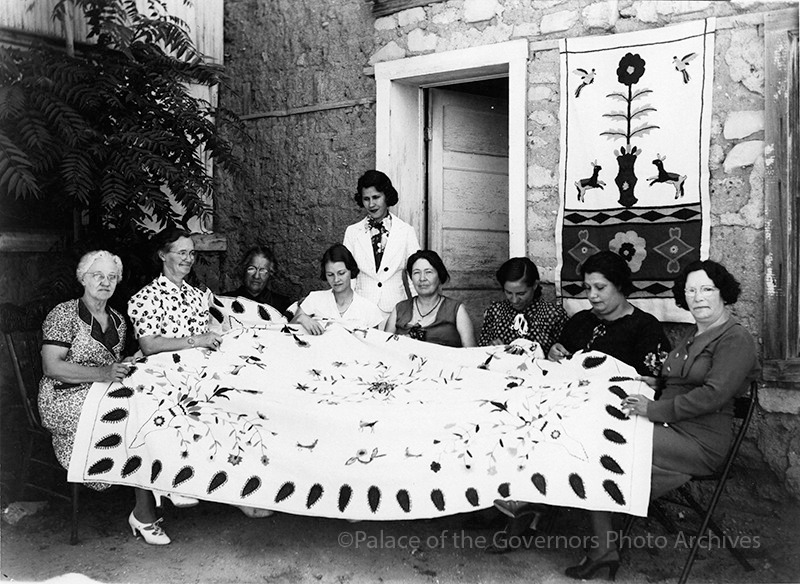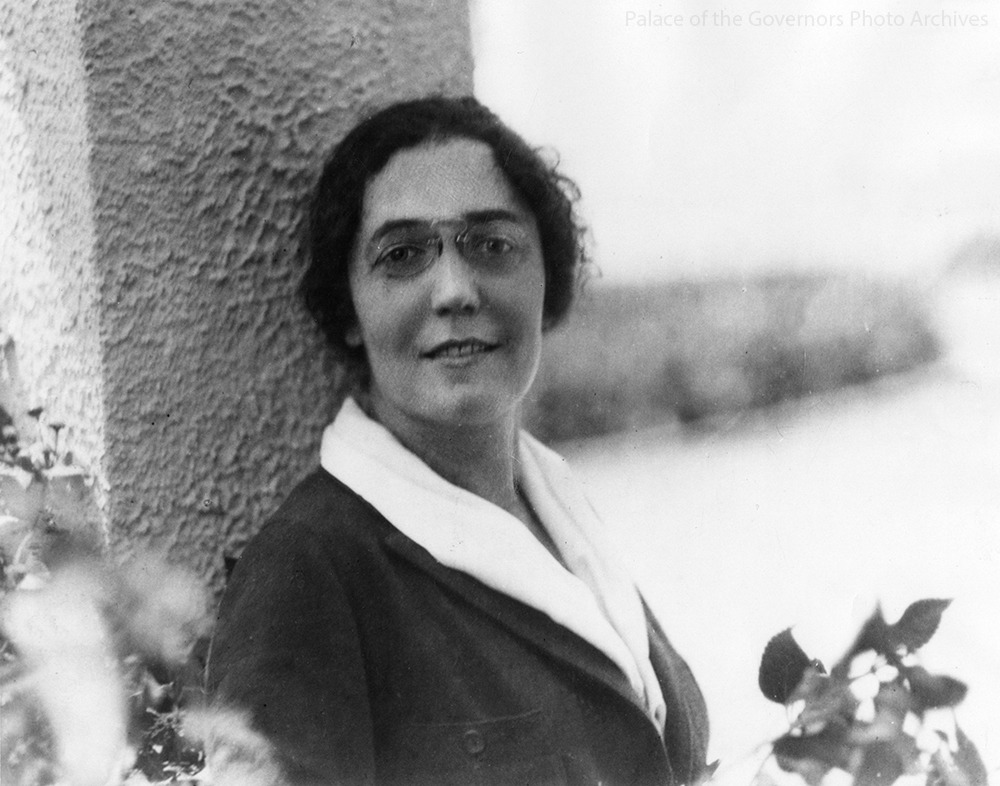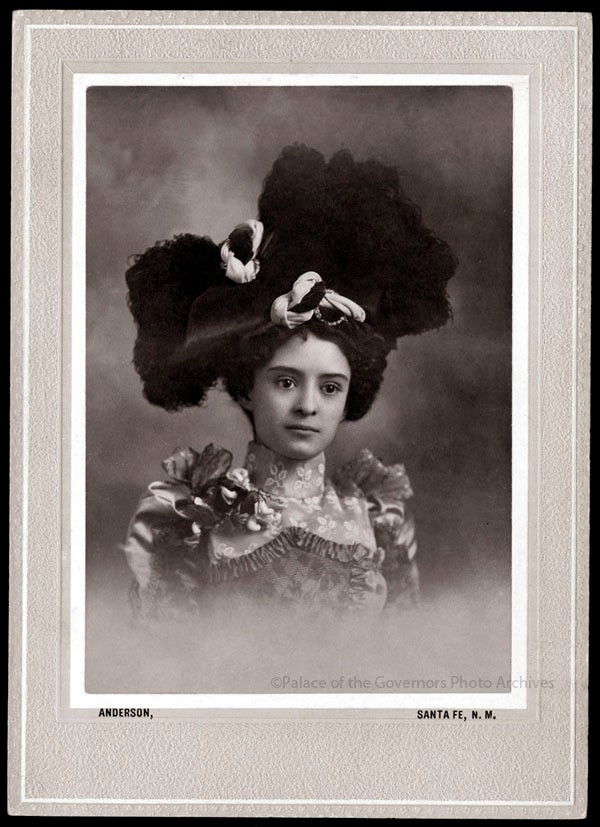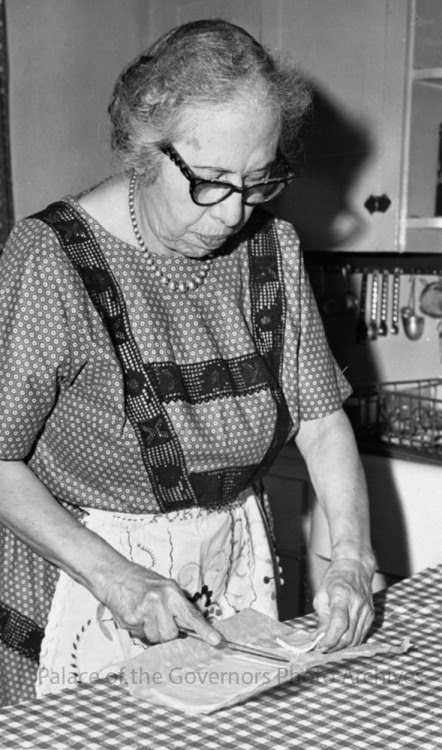
Fabiola Cabeza de Baca Gilbert in kitchen
Negative Number 148467
Fabiola Cabeza de Baca Gilbert (1895–1991)
Raised on a ranch at La Liendre, Fabiola received a degree from New Mexico Normal School. She worked as a rural teacher and an agricultural Home Extension agent. In the 1930s, she became a charter member of La Sociedad Folklorica. An author and teacher, she dedicated her life to preserving Hispanic traditions. In 1954, she wrote “We Fed Them Cactus,” a book about growing up at La Liendre.
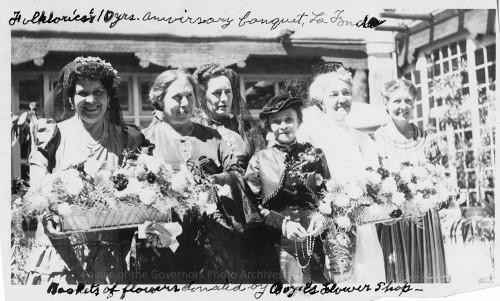
Date: 1945
Negative Number 009928
Notes: Includes Fabiola C de Baca Gilbert (second from left) and Cleofas Martinez (third from right)
Roadside Marker Location: La Liendre Community, San Miguel County, NM Highway 67 at junction with NM Highway 104
You can view a county by county list of the Historic Women Mile Markers in this pdf.
You can view a map of the Historic Women Mile Markers at www.nmhistoricwomen.org
March is Women’s History Month. During this month we’ll be highlighting some of the women featured on New Mexico’s Historic Women Roadside Markers. Text provided by our colleagues at New Mexico Historic Preservation Division

